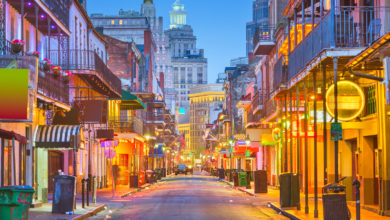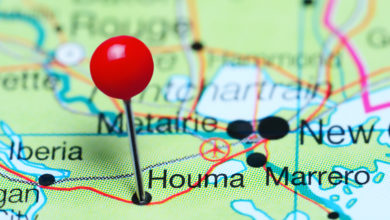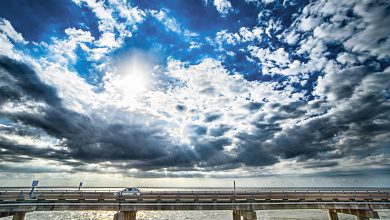Beyond the Beignets: Explore the Natural Wonders of Louisiana
Get a spectacular look at nature's beauty in the Pelican State
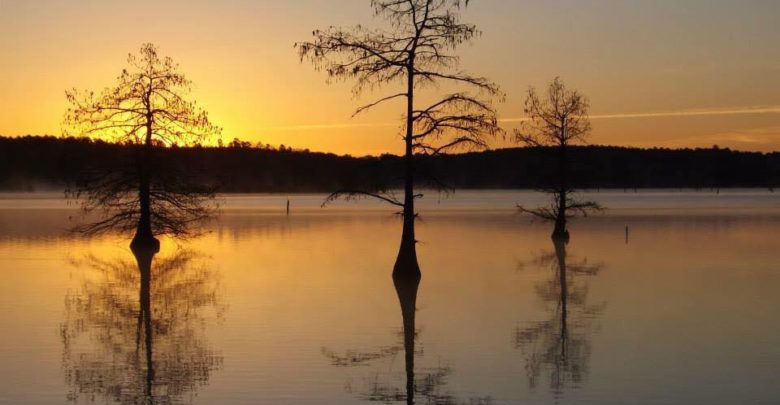
You can get some great Cajun food and enjoy fantastic jazz in Louisiana. But did you know that there are breathtaking natural wonders throughout the state? If you are looking to recharge and get away from it all, you will want to visit these unique spots that’ll take you back to the real Louisiana. Here are the best natural wonders located all within the Bayou State.
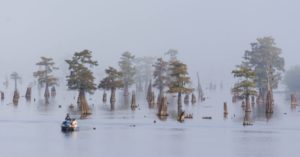
Atchafalaya National Wildlife Reserve
Louisiana is home to many swamps and marshes, and there is a reason it is known as bayou country. Atchafalaya River Basin is one of the largest swamps and wetlands in the United States. The basin is in the south-central part of the state where the Gulf of Mexico and the Atchafalaya River merge. The area is so massive that it spans from Simmesport through eight parishes up to Morgan City. The basin contains a significant forest habitat with marshes and open water, as well as the largest contiguous block of floodplain forest and forest wetlands in the lower Mississippi River valley.

You can start your visit at the Atchafalaya National Wildlife Reserve. While you are there, take a look at the iconic cypress-tupelo swamps on the guided boat tour. With the Spanish moss canopies and trees, you will definitely feel like you have stepped back into the Old South. Make sure to keep your eyes open to see the local native animals, including the wild hogs, snakes, and gators that call the basin area home.

Avery Island
If you are a fan of Tabasco sauce, you will recognize the name of Avery Island. The island takes its name from the Avery family after they settled in the area around the late 1830s. Today, the National Register of Historic Places lists the island as a protected spot. Before European settlement, the Native Americans had discovered a massive salt dome covered by the local flora and use it to trade with other tribes in the area. By 1868, the Avery family started to process their brand of sauce. That process is still used today to make this spicy condiment.

Besides being the home of Tabasco, Avery Island is a natural paradise. Edward Avery McIlhenny founded Bird City in 1895 as a place for young egrets to roost and return in the spring season. You can see the egrets, blue herons, and roseate spoonbills throughout the island. In addition to the birds, the Avery family introduced numerous exotic plants to the area, including Egyptian papyrus sedge and Japanese camellias. Even though the family established their production on the island, they took great strides to preserve the natural landscape, including burying pipeline underground to protect the wildlife and natural views. If you want to get an up-close look at the natural wonder of Avery Island, visit the Jungle Gardens and Bird City as both locations as open to the public.

Lake D’Arbonne State Park
Lake D’Arbonne State Park is popular with visitors and locals. You can set up and explore over 655 acres of piney forests, hills, and a beautiful lake. The 15,250 acres of Lake D’Arbonne is the centerpiece of the park, and it features five fishing piers along the shores. This body of water is one of the must-see spots for fishing enthusiasts as record catches of crappie, catfish, bass, and bream have been recorded at the lake.

With over seven miles of water, head out on a boat to explore the area. For the photographers, several tree stands dot the park, and they provide an excellent opportunity to snap a picture of the lake or capture the local wildlife in action. If you want a closer look, the state park also has several nature trails that allow you to set out and see the native wildlife and flora dotting the landscape. You can even enjoy a picnic lunch under the trees since the park has several tables and benches available for public use. Lake D’Arbonne is one natural wonder that you will not want to miss in northern Louisiana.

Kisatchie National Forest
While Louisiana features many scenic wonders, there is only one designed national forest in the state. The Kisatchie National Forest spans over 600,000 acres throughout seven parishes. You can see more of the area while you camp or hike within the protected space. Kisatchie is home to some of the oldest rocks in the state, and it features a large area of longleaf pine forests. In addition to that, there is an extensive collection of rare seepage bogs and calcareous prairies.

The national forest is also near the Kisatchie Hills Wilderness Area, where you can see the diverse coastal plains of the state. The forest also protects some of the native plants of Louisiana, including the rose pogonia orchid and the pale pitcher plant. Some of the park’s rare animal species include the red-cockaded woodpecker, Louisiana black bear, Louisiana pine snake, and Louisiana pearl shell mussel. Like most national parks, you can enjoy some horseback riding, mountain biking, and camping. If you do travel down to Kisatchie, you will want to put on your boots and hike the trails. The Azalea Trail and Backbone Trail offer some of the most spectacular views in the entire park.

Bayou Sauvage National Refuge
You might think that natural wonders are far away from the city. Well, think again! The Bayou Sauvage National Refuge is within the city limits of New Orleans. It is the largest national urban wildlife refuge in the United States. Since 1990, the Bayou Sauvage has been home to nutria, turtles, snakes, gators, and birds. It covers over 23,000 acres of brackish and freshwater marshes and coastal hardwood forests. This spot is a great place to stop and pull out your binoculars and cameras for a fantastic view of the wildlife. There are plenty of public walkways to get a closer look at the park. However, if you are more adventurous, you can see the swamp via a kayak, canoe, or small paddle boat. The national refuge is one of the hidden gems of New Orleans.
As you can see, there is more to Louisiana than the good times in New Orleans. The entire state is filled with natural beauty waiting for you to go and explore. So step away from the city, and enjoy the natural wonders of the Pelican State.

